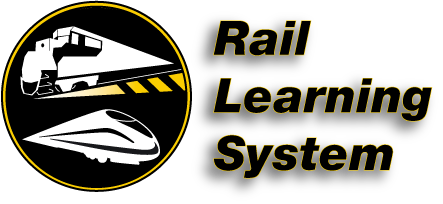Due to major system updates, anybody who created an account with the High Speed Rail Learning System before August 1st, 2017 will need to create a new account. Accounts created before August 1st are no longer available.
We are sorry for any inconvenience.
High Speed Rail Advanced Technologies: Topics
 Welcome to HSR103: High Speed Rail Advanced Technologies. This course is part of the Introduction to High Speed Rail category, along with HSR101 and HSR102. If you haven't already, we recommend completing HSR101 and HSR102 before you attemp this course. Some of the terminology and concepts used in this course are introduced in earlier courses.
Welcome to HSR103: High Speed Rail Advanced Technologies. This course is part of the Introduction to High Speed Rail category, along with HSR101 and HSR102. If you haven't already, we recommend completing HSR101 and HSR102 before you attemp this course. Some of the terminology and concepts used in this course are introduced in earlier courses.
This course is provided and narrated by Tsung-Chung (TC) Kao of the University of Illinois. Dr. Tsung-Chung Kao holds a B.S. in civil engineering from National Taiwan University (1971), an M.S. in structural engineering from Rutgers University (1974), and an M.S. and Ph.D. in geotechnical engineering from the University of California at Berkeley. He is a licensed professional engineer in California and Taiwan.
The topics explored below are select portions a larger course taught at the University of Illinois. We begin with an examination of high speed rolling stock, followed by HSR planning, and finally HSR construction.
The quizzes in each section are based on the video lectures. The supplementary materials for each section are not required reading, but are informative. If you find yourself wanting to know more, these resources are excellent places to begin.
Rolling stock designed for running at high speeds are complex pieces of engineering precisely manufactured for velocity, efficiency, and safety. This module examines high speed trains in depth, from the characteristics of HS trains around the world, to the propulsion and braking systems used by those trains.
Planning for a high speed rail system is a complex process in its own right. Because HS systems are such an expensive undertaking, the planning process is a critical step, as thorough planning can help eliminate problems later in the project. There are issues of land ownership, environmental steps that need to be taken, land surveying, station and route planning, and much more. This module will more closely examine the planning stage of HSR systems.
After a thorough planning process, the HS system is ready for construction. The scale and precision required by a high speed rail system creates unique challenges. This module examines the construction and maintenance of HS systems, and some of the challenges faced.
